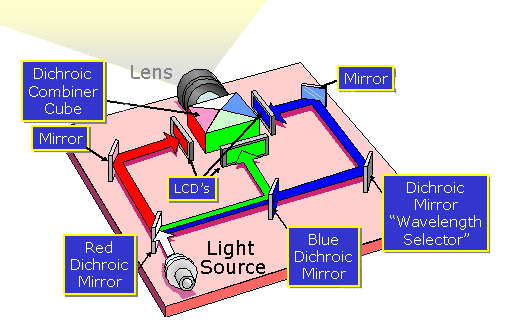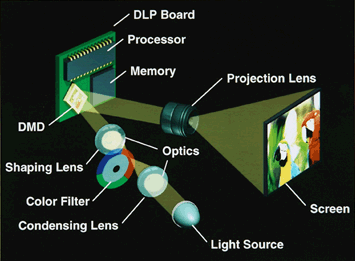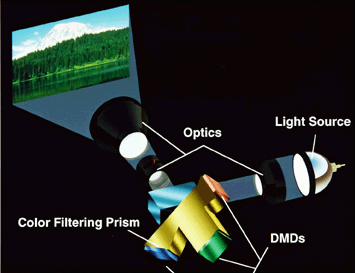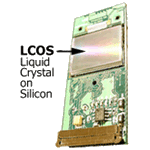1 (888) 248-0675
1 (888) 248-0675

In the Projector People tradition, we have done the research for you. Here is a fast and easy look at how the reigning champions of display technology work. We have also included the hottest new contenders that are trying to make their way to the big time.
Most LCD projectors have three panels. Each panel is a prism that allows blue, red, or green light through its pixels. These separate colors are then converged and projected. Electrical signals turn on pixels within a set based on the resolution of the unit. LCDs are known to produce greater color definition, offering more shades or variations of color than single-chip DLP® projectors. DLP® projectors can sometimes burn definition out of the highlights and shadows with their vibrant colors. Newer LCD projectors include special optics enhancers like micro-lens array that minimize pixelization, known as the "screen door effect." New LCD projectors have contrast ratios as high as 200,000:1, compared to DLP® projectors' 50,000:1. The portability and brightness of LCD projectors have made them a popular choice for traveling presenters. The lightest LCD projectors weigh in at just under 4 lbs.

The single-chip DLP® is the most portable of all our players. Currently, you can find single-chip DLP® projectors that weigh less than 1 pound. Digital Light Processing is the product of the great minds at Texas Instruments. DLP® uses a single Digital Mirror Device (DMD) chip with thousands of tiny mirrors, each representing a single pixel. These mirrors tilt back and forth to create the image. One limitation of DLP® technology thus far is brightness, with most models capped at 3,000 lumens compared to 6,000+ lumens of comparably priced LCDs and three-chip DLP® projectors. However, because of their deep, rich blacks and high contrast ratios, DLP® projectors are popular among home theater enthusiasts.
Image and Flash demo reproduced courtesy of Texas Instruments

The three-chip DLP® has the best-looking images of all the players. The image quality is unsurpassed, but it comes with a higher price tag, ranging from $15,000 to $30,000 or more. Unlike CRTs and single-chip DLP® projectors, three-chip DLP® can have very high lumen output levels, making them suitable for large venues.
Image reproduced courtesy of Texas Instruments

'LCoS' stands for 'liquid crystal on a silicon wafer.' Combining the best features of LCD and DLP technologies, LCoS is both reflective and transmissive. It offers high pixel density, no flickering, no "screen door" effect, no "rainbows," and higher picture quality on moving images. Many viewers consider LCoS to project the most film-like image. Most LCoS projectors start at SXGA resolution, delivering exceptional image quality.
Image courtesy of Hitachi
